Executive summary
The total waiting list and unique patient number have fallen for the second month in a row, with the total waiting list falling to 7.6 million in November 2023, despite disruption from ongoing industrial action and sustained demand.
A record 1.63 million patients began treatment in November 2023 and more than 2.3 million diagnostic tests were undertaken in the same month.
Continuing industrial action in the NHS has had a significant impact on patients. Since strikes began, more than 1.3 million appointments have been rescheduled.
Pressure has continued in emergency departments across the country, with more than 2.1 million A&E attendances and over 547,000 emergency admissions in December 2023.
Ambulance services also faced increasingly high demand in December, with more than 889,000 calls to 999 answered by staff throughout the month, an average of 28,690 every day.
Over 336,000 people received treatment for cancer over the last year between December 2022 and November 2023 – the highest year on record, and up by more than 23,000 on the same period pre-pandemic.
There is sustained demand for mental health services, with five million patients accessing care in 2022/23, an increase of more than one million in five years.
In November 2023, 31.9 million GP appointments took place. Of these, 42.6% took place on the same day they were booked and 67.9% were carried out face to face.
Urgent and emergency care
Ongoing demand for emergency care, a rise in winter viruses, and a combination of industrial action and bank holidays all placed pressure on urgent and emergency care (UEC) services in December.
There were 2,179,232 attendances in A&Es across England, an average of 70,298 per day.
69.4% of patients attending A&E were admitted, transferred or discharged within four hours. This compares to 65.2% in December 2022.
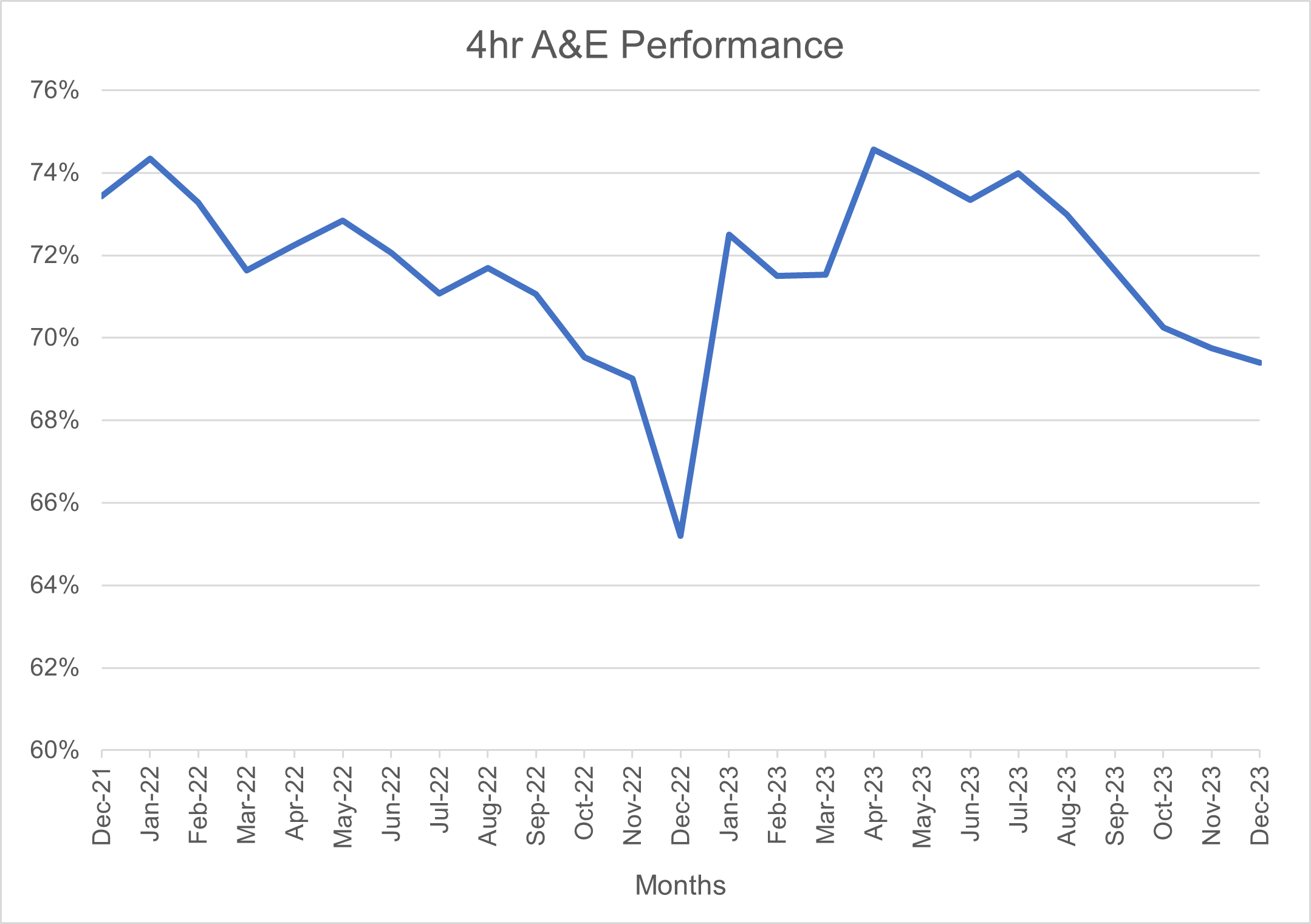
Ambulance services answered 889,389 calls to 999, or 28,690 per day, which was 4.2% more than in November. They also handled 760,589 incidents. 380,793 of incidents were conveyed to A&E, or 12,284 per day.
The average response time for a category two call was 45 minutes and 57 seconds. This is 46 minutes and 58 seconds faster compared to same month last year (the average response time for a category two call was 1:32:55 in December 2022).
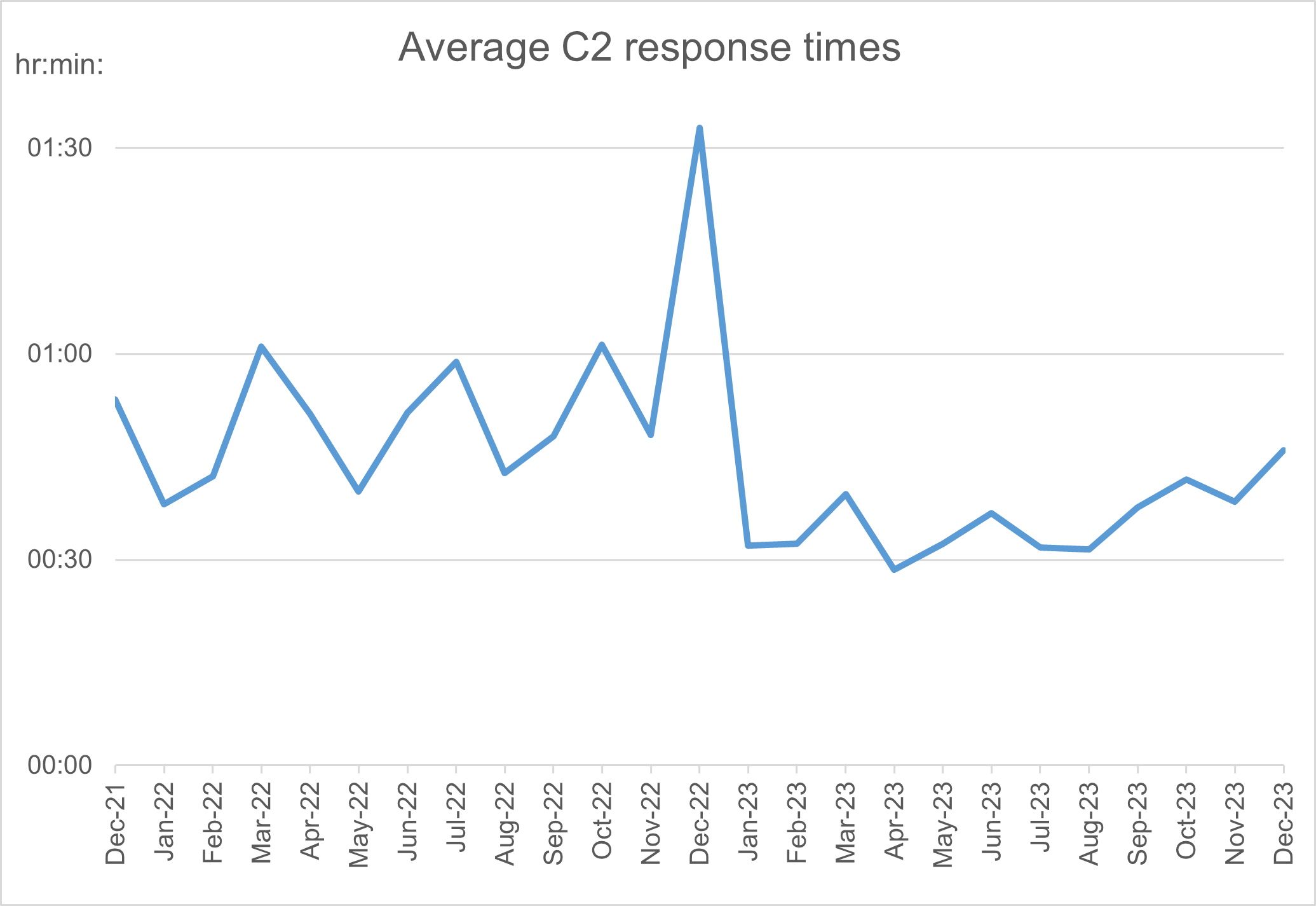
Despite pressures, the NHS remained resilient by stepping up capacity and treating more people at home and in the community.
Urgent Community Response services help avoid hospital admissions by providing urgent care to people in their homes. ICBs have full coverage and the latest provisional data shows that nationally 84% of patients were seen within the 2-hour standard in November, with every region exceeding or meeting the 70% target.
Elective recovery
The NHS made strong progress in reducing the waiting list and long waits for patients in November, a month in which no industrial action took place.
As of the end of November, 94,563 (1.2%) patients were waiting more than 65 weeks for treatment. This is down by 12% from October and is a significant reduction of 74,962 (44%) compared to the same month last year (159,440 patients were waiting more than 65 weeks for treatment in November 2022).
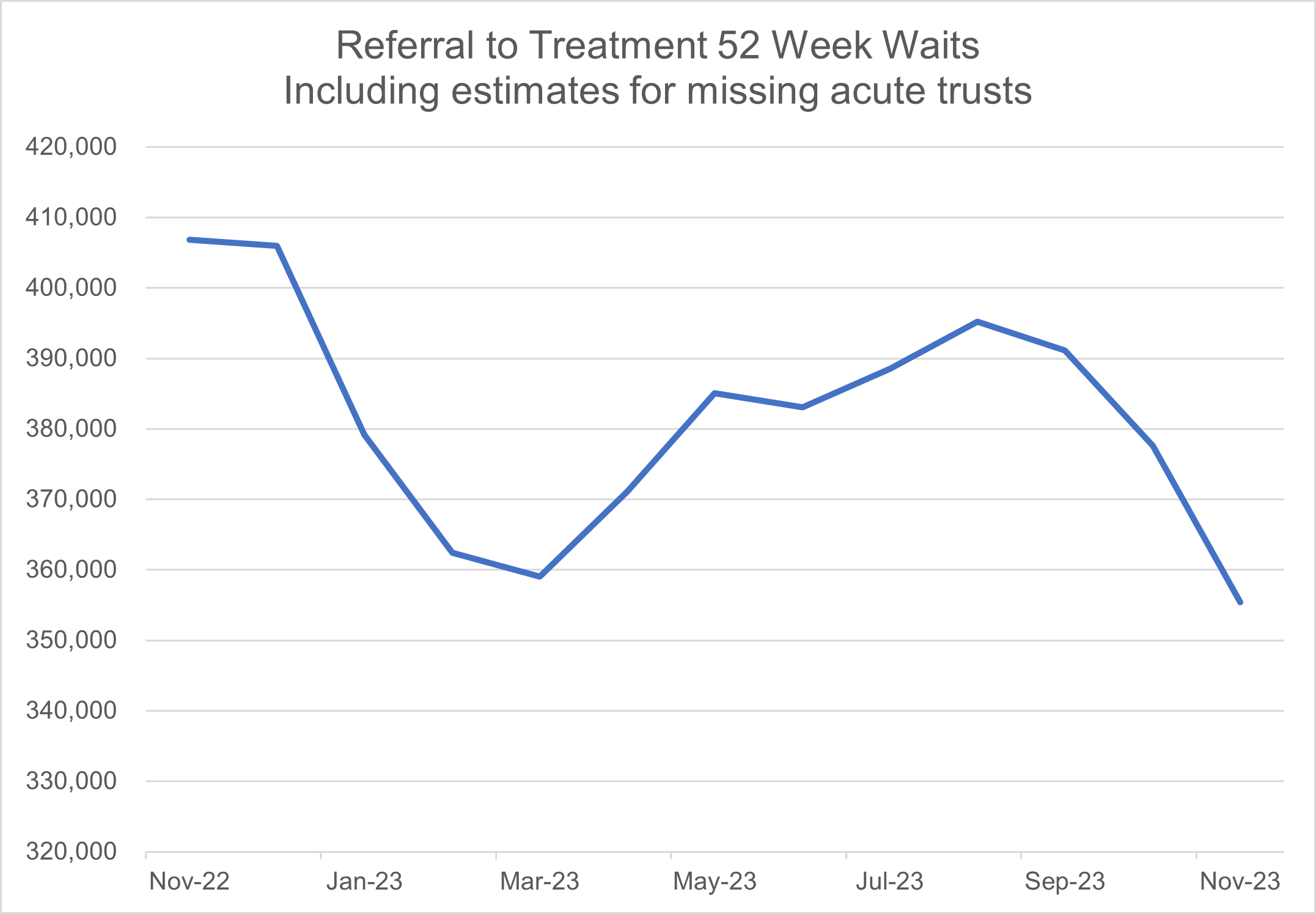
355,412 (4.7%) patients were waiting more than 52 weeks for treatment. This is down from 377,618 in October and down by 13% compared to the same month last year (406,799 patients were waiting more than 52 weeks for treatment in November 2022).
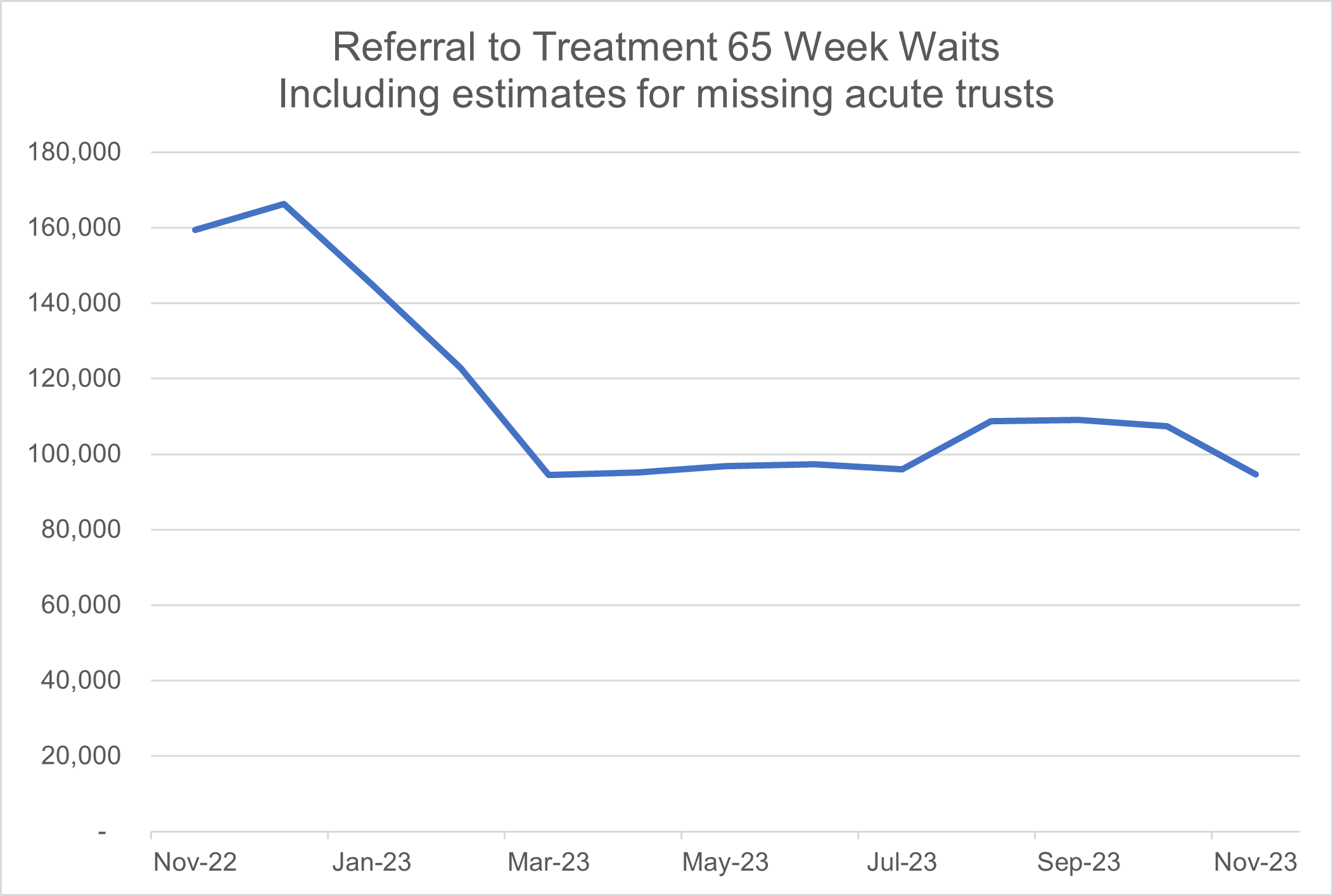
For the first time in a year, the total waiting list number dropped for a second consecutive month. As of the end of November, there were 7.61 million waits for care and an estimated 6.39 million unique patients on the elective waiting list. This is a reduction of 95,598 compared to October.
1,625,895 patients started treatment in November, an increase of 4.6% from October 2023 and an increase of 10% compared to November 2019. 1,033,575 started treatment within 18 weeks of referral. This is an increase of 4.3% from last month.
Cancer
Demand for cancer services continued at record levels in November with the number of urgent suspected cancer referrals at 126% of pre-pandemic levels. To meet high demand, treatment is also at record levels and there has been a reduction in the 62- day cancer backlog as a result.
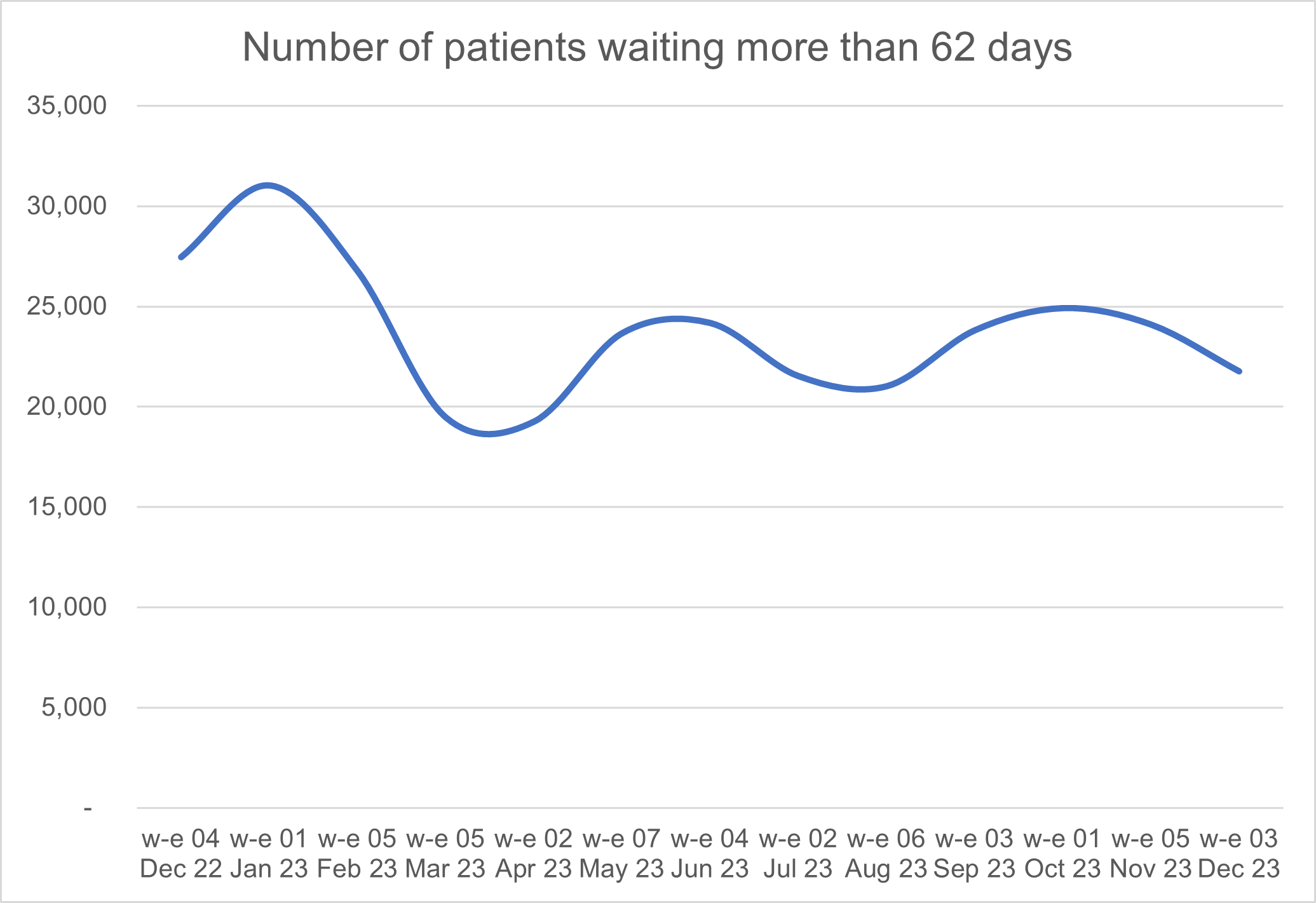
Over 336,000 people received treatment for cancer over the last year between December 2022 and November 2023 – the highest year on record, and up by more than 23,000 on the same period pre-pandemic.
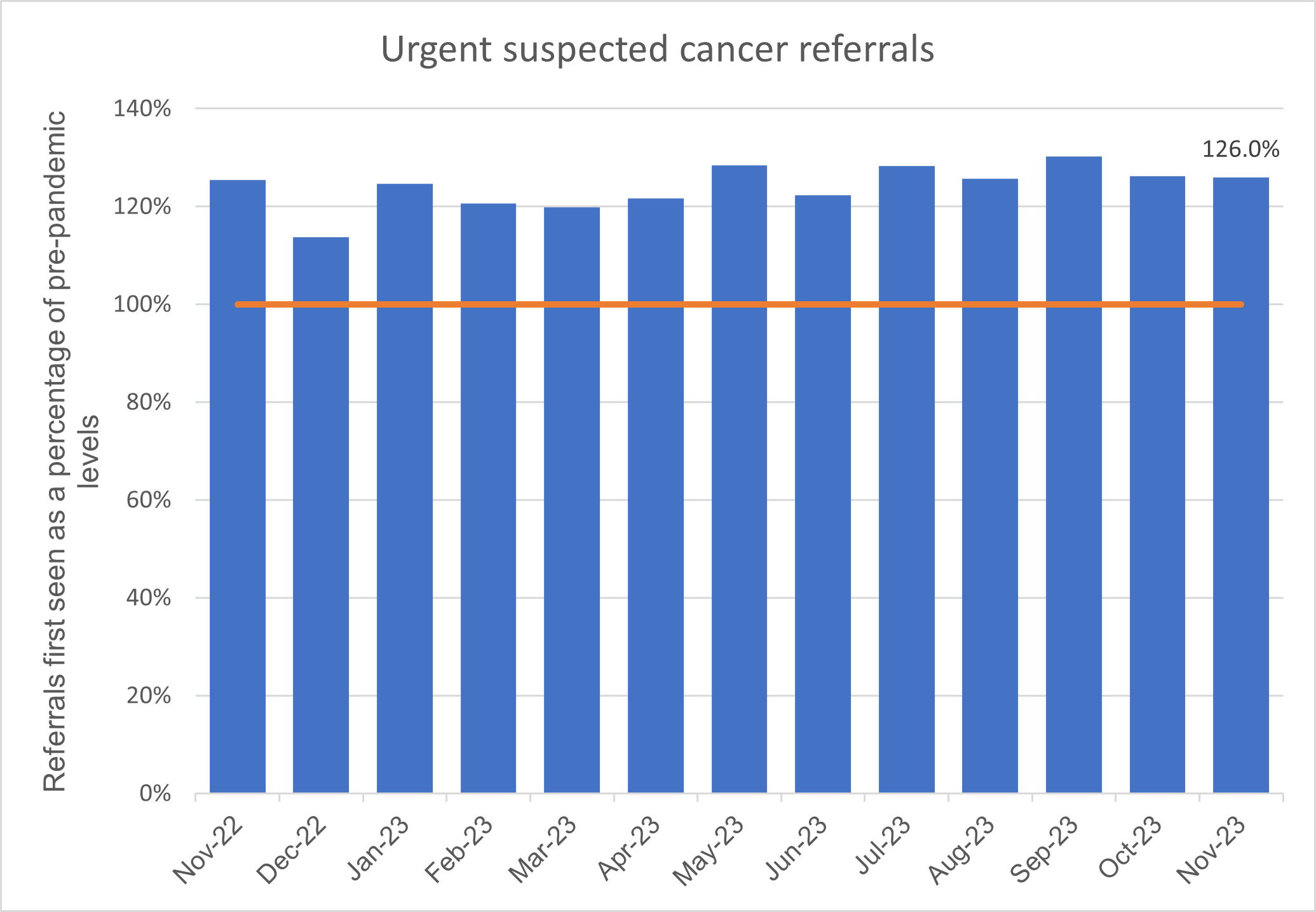
GPs have been referring people for urgent cancer checks in record numbers since March 2021. Since then, NHS staff have seen over a million more people than in the same period prior to the pandemic.
The increase in referrals has contributed to the NHS diagnosing more cancer at an early stage than ever before. We are diagnosing a higher proportion of cancers at an early stage now than ever before – about 2% higher than before the pandemic.
Survival is also at an all-time high. In 2023, the Annals of Oncology published findings showing that cancer deaths are around 10% lower in the UK compared to just 5 years ago.
The NHS is working hard to keep up with this increase in demand. It has been accelerating the installation of new diagnostic capacity, much of it in Community Diagnostic Centres.
The backlog has already reduced by 14,000 people since its peak last summer, and despite the recent seasonal increase, NHS staff remain focused on ensuring that people who have been waiting longest or who need care most urgently are seen first.
Mental health
More people than ever before now receive NHS support for their mental health, with five million patients accessing care in 2022/23, an increase of more than one million in five years.
The Long Term Plan (LTP) committed to increasing access to NHS mental health services for children and young people so that by 2023/24 an additional 345,000 0-25-year-olds would receive support. This means that in 2023/24, a total of 840,254 CYP under the age of 18 must have at least one contact with an NHS funded service or school or college based Mental Health Support Team (MHST).
The number of CYP receiving at least one contact in the 12 months to November 2023 increased to 739,751 from 732,121 in the previous month, which is a rise of over 36,000 since August 2023.
The number of new monthly referrals for children under 18 increased in November 2023 to 126,111 from 116,764 in October 2023. Attended contacts also increased in November compared to October.
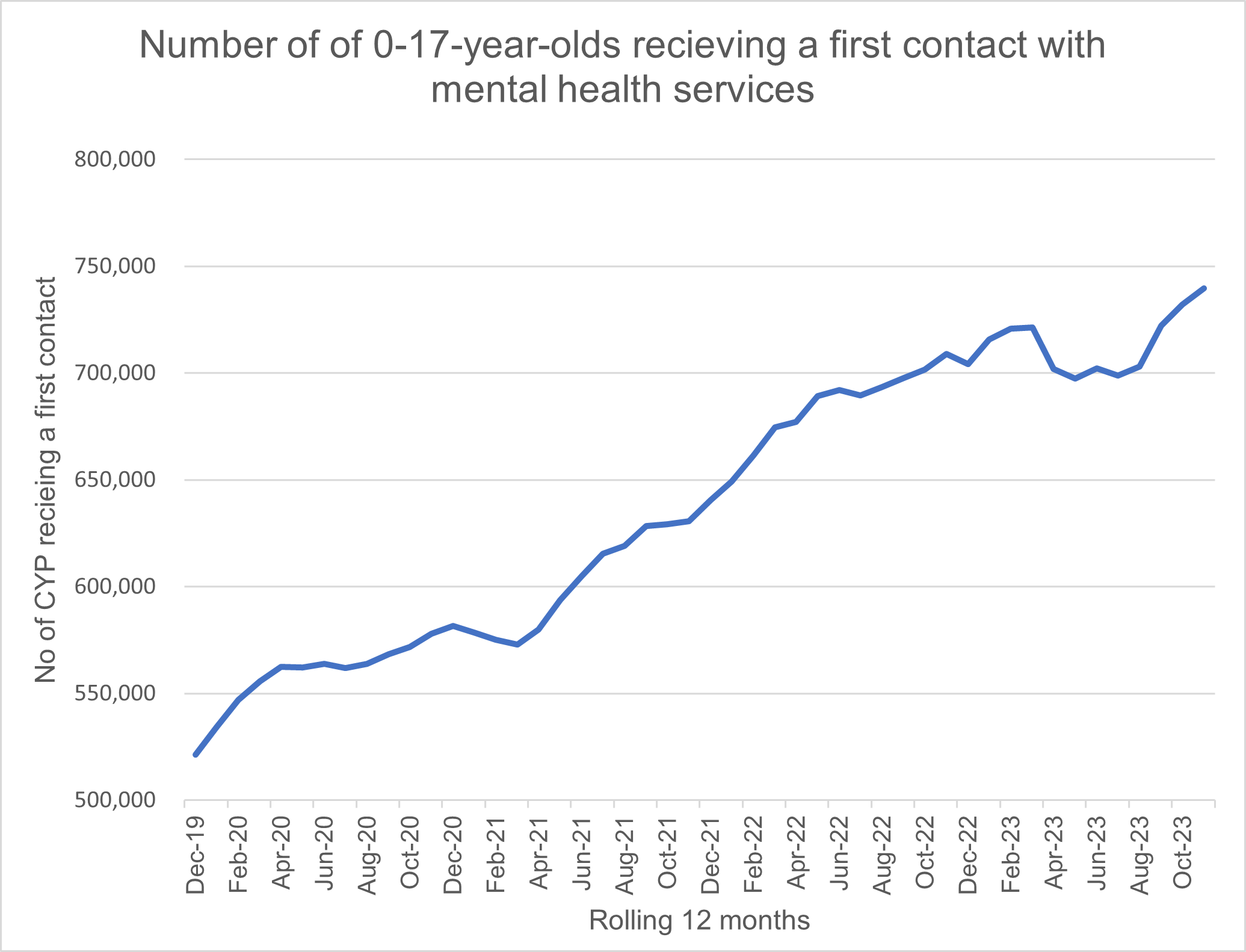
Since November 2023, NHS England has reported on longest waits for referrals to adult and CYP community mental health services. This includes people waiting for support for their mental health, as well as neurodevelopmental needs such as autism or ADHD. For everyone waiting for these services, timely access is key to meeting their needs effectively and improving outcomes.

